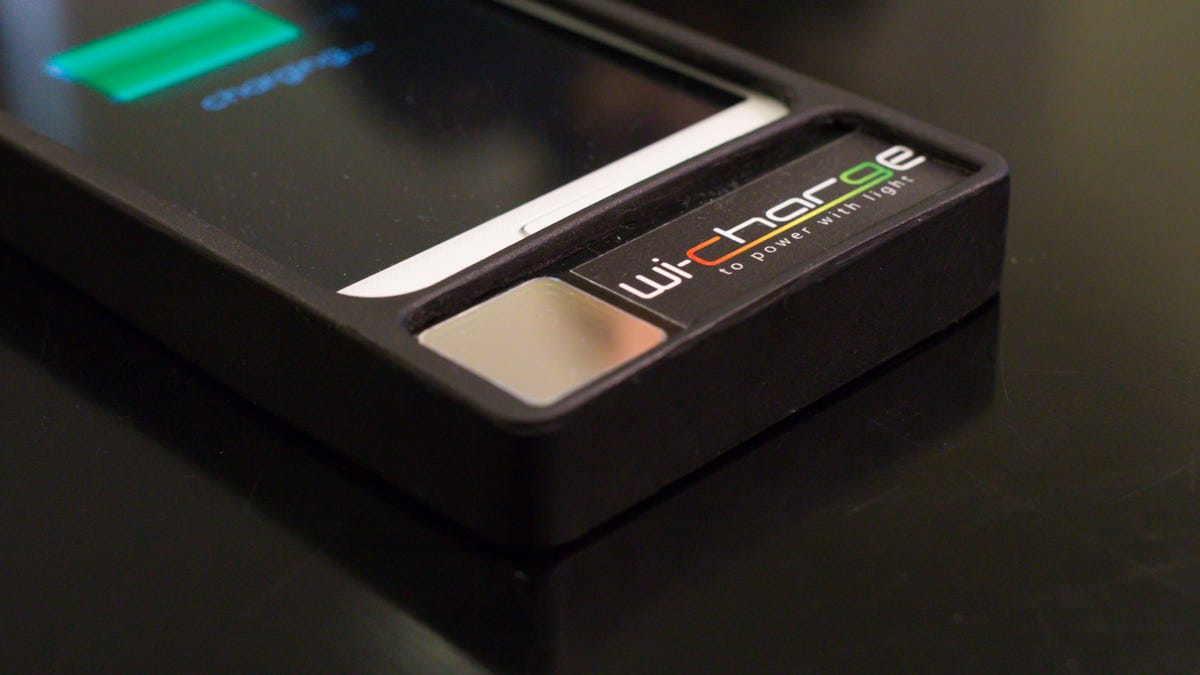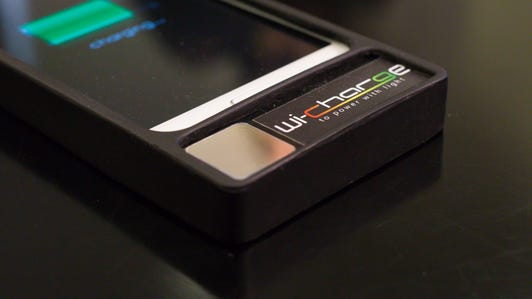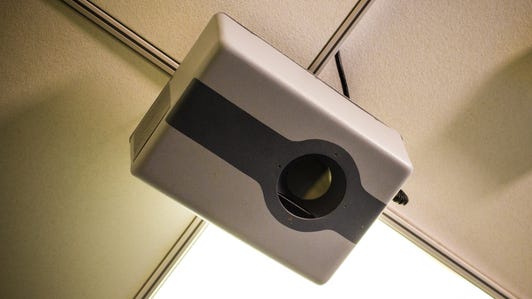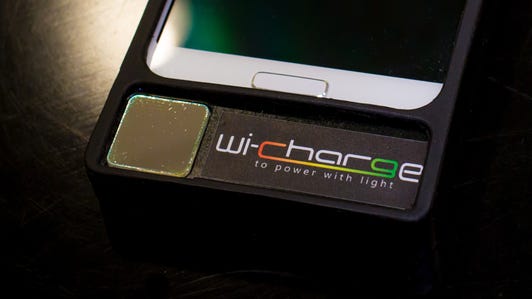
James Martin/CNET
In a few years, charging your device wirelessly will be as simple as doing nothing at all. That’s if wireless charging startup Wi-Charge gets its way.
Related links
- Magnetic fields make wireless charging a whole lot cooler
- Say hello to Rezence, your new wireless charging brand
- Key wireless charging groups A4WP, PMA agree to merge
- IKEA to sell furniture that can wirelessly charge your phone
The company envisions transmitters fitted into light fixtures and smoke detectors that beam infrared light to automatically top up devices within a room — say, a coffee shop or your home, or even an airport waiting lounge.
Wi-Charge’s system makes use of a ceiling-mounted transmitter to convert energy into infrared light, beam that light across an approximately 500-foot area and capture it in a receiver on or inside the electronic device, where it converts from light into energy once again.
If a device maker doesn’t integrate the infrared receiver directly into the smartphone or wireless speaker or keyboard, it could also easily attach to it through a case or other dongle.
The demo: Why infrared, and how well it works
Infrared is a narrow beam of invisible light. Unlike coils that emit radiation for induction or magnetic resonance types of wireless charging (Qi and Rezence, respectively), this method precisely beams light just to the receiver using a laser diode in the transmitter and a photovoltaic cell in the receiver to reconvert the light energy into electric energy.
A demo we saw in San Francisco in late February paired a ceiling-mounted transmitter (a large box for working-prototype purposes) with compatible cases and dongles, one on a smartphone and one on a wireless speaker.


Now playing:
Watch this:
Charge any device in the room with infrared light
2:02
So long as either device was in range, it charged wirelessly using the infrared transmitter. If you take the device out of range, or held the phone perfectly upright (so it stopped receiving signal), or if you blocked the light beam with your hand, charging ceased.
There were a few seconds of hang time before the music picked up again once you unblocked the receiver on the wireless speaker, but again, this is a demo years ahead of commercial production. Wi-Charge will presumably have worked out performance lag by then.
The particulars
The beauty of an always-on charging solution like Wi-Charge’s is that it’ll automatically and effortlessly power up devices. However, the company will need to work out some details first.
For starters, the quality of the charge is up in the air, depending on how many devices enter the space and how many transmitters there are. Since it’ll be certified to a specific power level, there’s a practical limit to the amount of power each infrared transmitter can beam out. The first generation might start at 10 watts, for instance, and focus on in-home devices rather than mobile devices.
Wi-Charge’s wireless charger tops up devices with infrared light (pictures)






+2 more
Eventually, Wi-Charge says its infrared-lit transmitters will work as efficiently as a typical wall charger.
Range is another are that Wi-Charge will have to perfect. Residential environments will only need ranges of 15 to 20 feet, while mobile products will require a reach of closer to 30 feet.
Wi-Charge’s team promises that although infrared beams are powerful, they also need to be safe. The device doesn’t produce electromagnetic radiation, so it should be certified safe for people with pacemakers, and the flow stop when you interrupt the beam with your body or with another object.
Time frame is still years out
Wi-Charge’s solution is still a long way off. The startup told CNET that its first smart-home products will arrive in the first half of 2016 in the guise of a smart-home transmitter you plug into a wall. It should cost in the $50 to $100 range (or roughly £33 to £66, or AU$ 65 to AU$130).
Mobile products should arrive in the first half of 2017 as a case or dongle, and graduate to a receiver integrated right into the device in 2018.
Not for all devices
Although always-on infrared charging seems like a dream, Wi-Charge knows that it isn’t suited to every device. Induction charging like the Qi standard or magnetic charging like Rezence will more efficiently charge larger items, like electric cars, for instance.
Like infrared itself, Wi-Charge’s charging ambitions are laser-focused: on smaller electronics like your tablets, laptops and phones.



